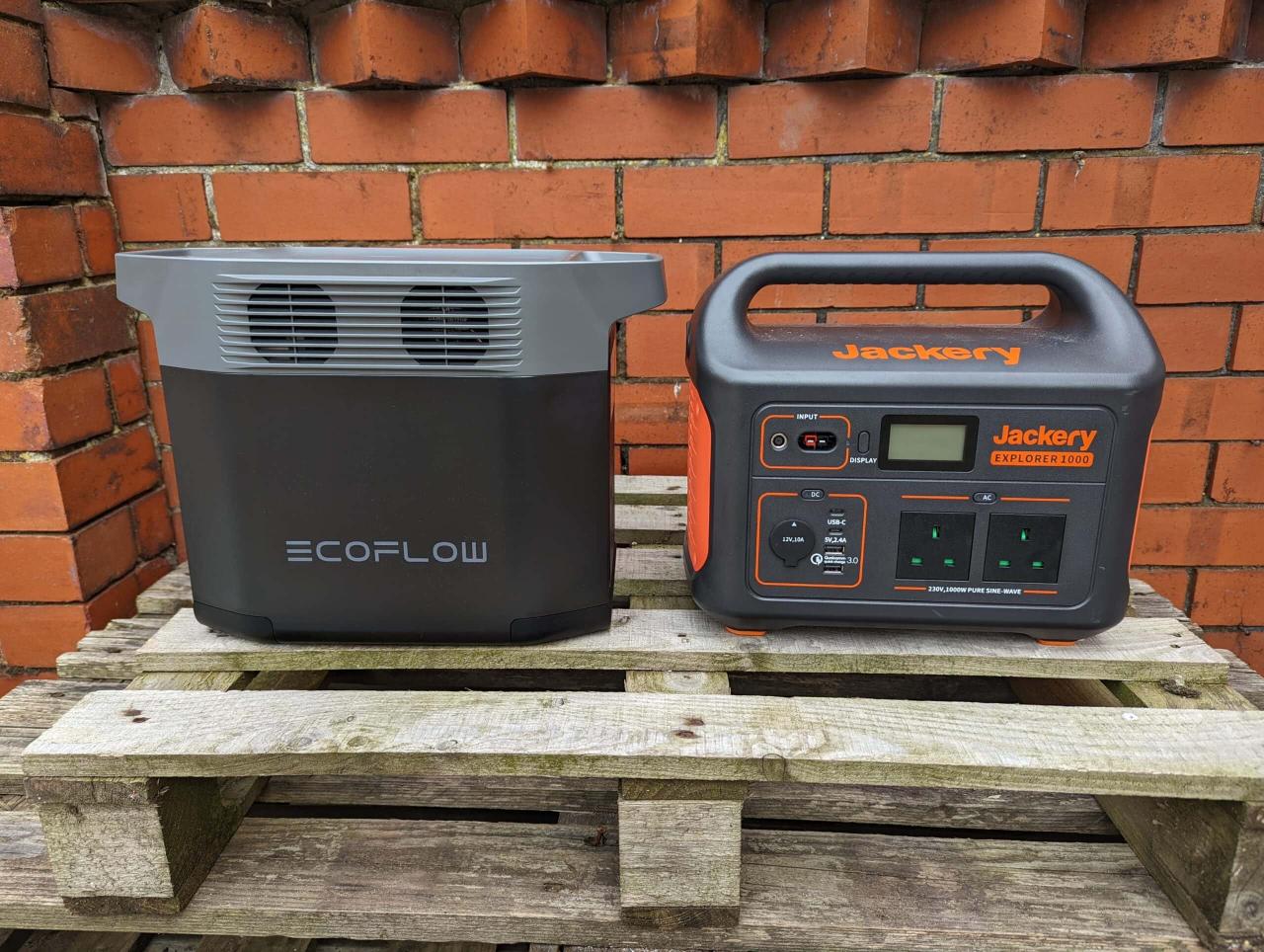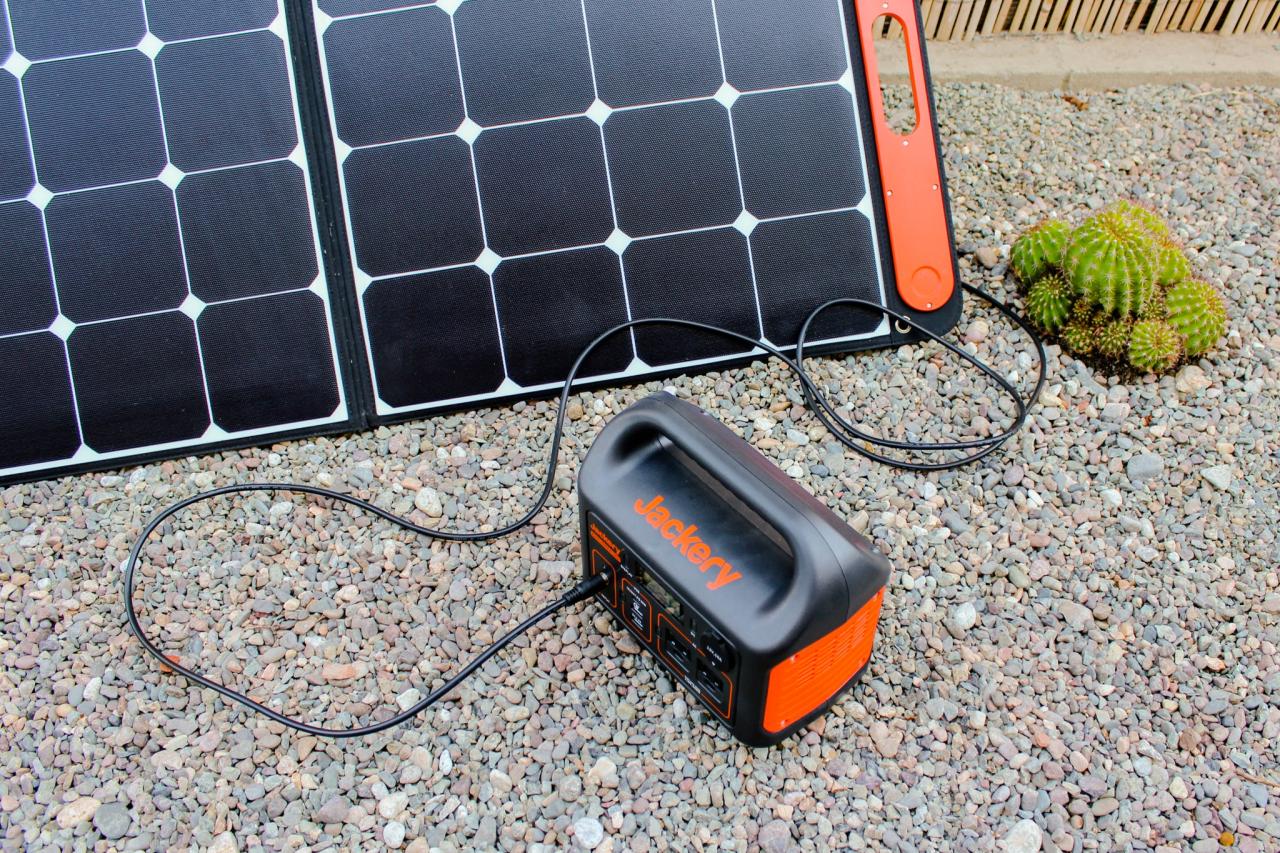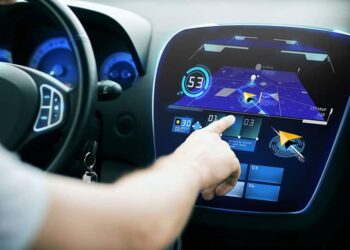Advanced Battery Technologies

At the heart of every portable power solution lies the battery. The revolution in portable power is largely driven by continuous advancements in battery chemistry, design, and manufacturing.
A. Lithium-Ion and Lithium-Polymer Innovations: For decades, Lithium-ion (Li-ion) batteries have been the workhorse of portable electronics, offering a good balance of energy density, power output, and cycle life. Continuous research has led to improvements in electrode materials (e.g., nickel-rich cathodes, silicon anodes) and electrolyte compositions, increasing their capacity and reducing charging times. Lithium-polymer (Li-Po) batteries, a variation of Li-ion using a polymer electrolyte, offer greater flexibility in form factor, allowing for thinner and lighter designs, which is crucial for sleek smartphones, drones, and wearables. Innovations in thermal management systems for these batteries are also enhancing safety and longevity, minimizing risks of overheating or degradation.
B. Solid-State Batteries: The Next Frontier: One of the most anticipated breakthroughs is solid-state battery (SSB) technology. Unlike traditional Li-ion batteries that use flammable liquid electrolytes, SSBs utilize a solid electrolyte, promising higher energy density (meaning more power in a smaller, lighter package), faster charging times, superior safety (reduced risk of thermal runaway), and a longer lifespan. Companies like Toyota, QuantumScape, and Factorial Energy are heavily investing in SSBs, aiming to revolutionize electric vehicles by enabling longer ranges and quicker recharges, but the technology also has immense potential for all portable electronics, from laptops to power tools, offering a significant leap over current battery performance.
C. Sodium-Ion Batteries and Alternative Chemistries: While lithium dominates, research into alternative battery chemistries is gaining momentum to address concerns about lithium scarcity and cost. Sodium-ion (Na-ion) batteries, for instance, use abundant and cheap sodium, offering a more sustainable and potentially lower-cost alternative. While currently having lower energy density than Li-ion, they are improving rapidly and show promise for large-scale energy storage, electric vehicles (especially for budget-friendly models), and potentially portable applications where cost and resource availability are critical factors. Other emerging chemistries include silicon-anode batteries, which promise significantly higher energy densities, and flow batteries for larger, grid-scale applications that could eventually trickle down to more portable systems.
D. Ultra-Capacitors and Hybrid Storage Systems: Beyond traditional batteries, ultra-capacitors (or supercapacitors) offer extremely fast charging and discharging cycles and very high power density, though with lower energy density. They excel at providing quick bursts of power or capturing regenerative energy efficiently. Hybrid storage systems, combining the high energy density of batteries with the rapid power delivery of ultra-capacitors, are emerging for applications like electric vehicles, renewable energy systems (smoothing out power fluctuations), and high-demand portable tools. These hybrid systems optimize for both continuous power and peak performance, offering a more versatile portable energy solution.
Portable Energy Generation
True freedom from the grid requires not just advanced storage, but also the ability to generate power on the go, utilizing various renewable and efficient methods.
A. Portable Solar Panels and Power Stations: The evolution of portable solar panels has transformed outdoor adventures, emergency preparedness, and remote work. Modern portable panels are increasingly efficient, foldable, and lightweight, making them easy to transport and deploy. They pair seamlessly with portable power stations (large battery packs with multiple output ports including AC outlets, USB, and DC) to create self-contained, off-grid power hubs. These power stations can recharge via solar, wall outlets, or car chargers, providing versatile power for everything from charging laptops and running mini-fridges to operating medical equipment during blackouts. They are becoming essential gear for campers, van dwellers, and disaster relief.
B. Micro Wind Turbines and Hydroelectric Generators: For more continuous off-grid power, especially in windy or watery environments, compact and efficient micro wind turbines and portable hydroelectric generators are emerging. Micro wind turbines are designed for easy setup and quiet operation, providing power for remote cabins, campsites, or as supplemental charging for RVs. Portable hydroelectric generators can be deployed in small streams or rivers, offering a consistent power source. While more niche, these renewable generators provide sustainable, continuous energy input for larger portable power needs, complementing battery storage effectively.
C. Fuel Cells: High-Density, Low-Emission Power: Fuel cell technology offers a high-energy-density, low-emission alternative for portable power. Hydrogen fuel cells, for instance, convert hydrogen and oxygen into electricity, with water as the only byproduct. While the infrastructure for hydrogen storage and refueling is still developing, compact fuel cell systems are being explored for specialized portable applications requiring long-duration power, such as military operations, remote scientific equipment, or compact emergency generators. Other types of fuel cells, like solid oxide fuel cells (SOFCs) or direct methanol fuel cells (DMFCs), are also being miniaturized for portable use, offering silent, efficient power sources.
D. Thermoelectric Generators (TEG) and Energy Harvesting: Thermoelectric Generators (TEGs) convert heat directly into electricity using the Seebeck effect. Portable TEG devices can harness waste heat from campfires, stoves, or even body heat to charge small electronics. Beyond TEGs, broader energy harvesting technologies are capturing ambient energy from light (photovoltaics for small sensors), motion (piezoelectrics for wearables), or even radio frequency (RF) signals to power ultra-low-power devices. While typically for very small power outputs, these technologies allow devices to become self-sustaining, extending battery life or eliminating the need for batteries entirely in certain applications.
Smart Power Management and Distribution

The true intelligence of portable power lies not just in generation or storage, but in the sophisticated management systems that optimize energy flow, monitor usage, and ensure safety.
A. Battery Management Systems (BMS) with AI Integration: Modern battery packs, especially those for high-power applications like electric vehicles or large portable power stations, rely on sophisticated Battery Management Systems (BMS). A BMS monitors individual battery cells for voltage, current, temperature, and state of charge, protecting against overcharging, over-discharging, overheating, and short circuits. Next-gen BMS are integrating AI and machine learning to predict battery degradation, optimize charging cycles for longevity, and balance cell loads more effectively. This intelligent management maximizes battery lifespan, performance, and safety, crucial for the reliability of portable power solutions.
B. Smart Inverters and Power Converters: For portable power stations to run standard AC appliances, highly efficient smart inverters are essential. These devices convert the DC power from batteries into clean AC power, often with pure sine wave output suitable for sensitive electronics. Next-gen inverters are becoming smaller, lighter, and more efficient, with intelligent load detection and power optimization features. Bi-directional inverters can also manage power flow between solar panels, batteries, and the grid (if connected), allowing for seamless transitions and optimizing energy consumption, effectively turning a portable power station into a mini-grid.
C. Wireless Power Distribution and Device Charging: Beyond individual device charging, advancements in wireless power distribution promise to transform spaces into charging zones. Technologies like resonant inductive coupling can wirelessly charge multiple devices simultaneously over distances of several centimeters to a few meters. Imagine a conference room where laptops and phones charge automatically as soon as they are placed on a table, or smart furniture with embedded charging pads. This eliminates cable clutter and ensures devices are always topped up, creating a truly untethered experience for portable electronics within a defined space.
D. Power Monitoring Apps and Cloud Integration: To give users control and insight, most portable power solutions integrate with smartphone apps and cloud platforms. These apps allow users to monitor battery levels, view charging status, control output ports, track energy consumption, and receive alerts. Cloud integration enables remote management, over-the-air firmware updates, and data logging for historical analysis. This digital interface enhances the user experience, allowing for intelligent energy management and troubleshooting from anywhere, making portable power systems smarter and more user-friendly.
Applications and Impact
The proliferation of portable power solutions is unlocking new possibilities across a vast array of sectors, fundamentally changing how we approach work, recreation, and emergency preparedness.
A. Remote Work and Digital Nomads: The rise of portable power has been a boon for remote workers and digital nomads. Portable power stations, high-capacity power banks, and solar chargers allow professionals to operate laptops, monitors, and communication devices for extended periods in locations without traditional power outlets – from co-working spaces to remote cabins or while traveling. This freedom from fixed power sources provides unprecedented flexibility, enabling a truly untethered work style and fostering a new generation of mobile entrepreneurs.
B. Outdoor Adventures and Recreation: For campers, hikers, RV enthusiasts, and overlanders, portable power solutions are game-changers. They enable the use of essential electronics (lighting, communication devices, GPS), small appliances (portable fridges, coffee makers), and even medical equipment (CPAP machines) far off the grid. The ability to recharge devices and maintain comfort in remote locations enhances safety, extends trips, and makes the great outdoors more accessible and enjoyable for everyone, without sacrificing modern conveniences.
C. Emergency Preparedness and Disaster Relief: In situations like power outages, natural disasters, or remote relief operations, portable power is vital. Large portable power stations can provide backup power for essential home appliances, medical devices, and communication systems during blackouts. For first responders and disaster relief teams, ruggedized portable power packs and solar generators provide immediate energy for critical equipment in areas where infrastructure is compromised, ensuring communication, lighting, and essential services can be maintained during crises.
D. Mobile Workforces and Construction Sites: For construction crews, film sets, outdoor events, and other mobile workforces, portable power solutions offer a clean, quiet, and efficient alternative to noisy, polluting gasoline generators. Battery-powered tools are becoming more powerful and long-lasting, while portable power stations can run lights, charging stations, and even some heavy-duty equipment. This reduces noise pollution, improves air quality on job sites, and provides flexible power in areas without readily available grid access.
E. Home Backup and Energy Resilience: Even for grid-connected homes, portable power stations are emerging as essential backup solutions. They offer a silent, emissions-free alternative to traditional generators for keeping essential appliances running during short-to-medium power outages. Some high-capacity portable power systems can even be integrated into a home’s electrical panel (with professional installation), providing seamless power transfer during an outage and acting as a micro-grid solution for enhanced energy resilience.
Challenges and Future Outlook
While the future of portable power looks incredibly promising, its widespread adoption and continued evolution face several challenges that require ongoing innovation and strategic planning.
A. Cost and Affordability: While prices are decreasing, advanced battery chemistries and large-capacity portable power stations can still be a significant investment for many consumers. Continued research and economies of scale are needed to drive down costs, making these transformative solutions accessible to a wider global population, especially in developing regions where grid access is unreliable.
B. Recycling and Environmental Impact: The growing number of batteries being produced and consumed raises significant environmental concerns regarding their end-of-life management. Developing efficient and sustainable battery recycling technologies is crucial to recover valuable materials, reduce waste, and minimize the ecological footprint of portable power solutions. This also includes designing batteries for easier disassembly and recycling.
C. Standardization and Interoperability: The current market for portable power solutions features a wide array of proprietary connectors, charging protocols, and battery form factors. Greater standardization and interoperability would benefit consumers by simplifying compatibility and reducing e-waste. Industry collaboration on universal charging standards and modular battery designs will be key to a more seamless and user-friendly portable power ecosystem.
D. Charging Infrastructure and Speed: While portable power solutions offer freedom, they still need to be recharged. Expanding the availability of fast-charging infrastructure (e.g., more powerful solar charging capabilities, faster wall charging) is vital. Innovations in battery chemistry that enable ultra-fast charging without compromising lifespan or safety are also critical to truly realize the “unplug and go” vision.
E. Density vs. Safety Trade-offs: As battery energy density increases, managing safety remains paramount. The risk of thermal runaway, fire, or degradation needs to be meticulously addressed through advanced Battery Management Systems (BMS), robust packaging, and inherent safety features in new battery chemistries. Balancing the drive for more power in smaller packages with absolute safety is an ongoing engineering challenge.
Conclusion
In conclusion, portable power solutions are no longer a niche market; they are a defining characteristic of our increasingly mobile, resilient, and interconnected world. From the revolutionary advancements in battery technology that pack more energy into smaller forms, to the diverse methods of generating power on the move, and the intelligent systems that manage it all, these innovations are transforming space by unshackling us from the limitations of fixed power sources. As these technologies continue to evolve, they promise to unlock unprecedented levels of freedom, sustainability, and preparedness, truly empowering individuals and communities to operate effectively anywhere, anytime, ushering in an exciting era where the power is always within reach.













